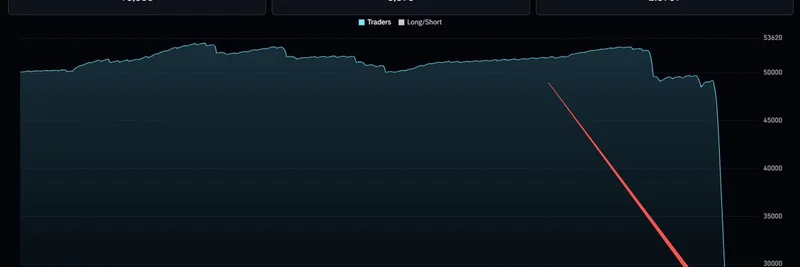If you've been keeping an eye on the crypto markets lately, you might have noticed some wild swings. One platform that's been in the spotlight is Hyperliquid, a decentralized exchange specializing in perpetual futures trading on its own high-performance blockchain. Recently, data from CoinGlass highlighted a dramatic drop in the number of traders holding open positions on the platform—from around 50,000 down to just 20,000. That's a plunge that's got everyone talking, especially in the meme token community where volatility is part of the game.
Understanding the Drop: Mass Liquidations in a Volatile Market
Hyperliquid is known for its seamless, on-chain trading experience, allowing users to go long or short on a variety of assets, including popular meme tokens. The long/short ratio, which measures the balance between bullish (long) and bearish (short) positions, was sitting at about 2.87 at the time of the tweet, with 18,305 long traders versus 6,376 short ones. But the real story is in the total trader count nosedive.
This drop didn't happen in a vacuum. The crypto market recently endured a brutal crash, with prices tumbling across the board. According to reports, over 1.6 million traders were liquidated industry-wide, racking up a staggering $19 billion in losses in a single day. On Hyperliquid specifically, more than 1,000 wallets were completely wiped out, and over 6,300 accounts ended up in the red, with combined losses exceeding $1.23 billion. That's not pocket change—205 wallets lost over $1 million each, and more than 1,070 saw six-figure hits.
What caused this? Extreme market volatility. When prices swing wildly, leveraged positions (common in perps trading) can get liquidated if they hit certain thresholds. Hyperliquid uses auto-deleveraging (ADL) to prevent platform insolvency, which means in high-stress scenarios, profitable positions might be partially closed to cover losses elsewhere. Unlike some centralized exchanges that faced downtime or delays (looking at you, Binance), Hyperliquid handled the surge in traffic flawlessly—no latency issues, zero downtime, thanks to its HyperBFT consensus mechanism.
Why Meme Token Traders Should Pay Attention
Meme tokens thrive on hype and community momentum, but they're also notoriously volatile. Platforms like Hyperliquid make it easy to trade perps on these assets, amplifying both gains and losses through leverage. During the crash, many meme coin enthusiasts likely got caught in the crossfire, holding over-leveraged longs as prices tanked.
For example, Hyperliquid's native token HYPE itself dropped about 6% to around $45 amid the turmoil. If you're into memes like those on Solana or other chains, this event is a stark reminder of the risks. The platform saw a record 80,000 daily active users yesterday, but with 42,000 liquidations, it's clear that not everyone walked away unscathed.
This shakeout could signal a market reset. With fewer open positions, the long/short ratio might stabilize, potentially setting the stage for a rebound. But for meme token degens, it's a cue to reassess strategies—maybe dial back on leverage or diversify across chains.
Lessons Learned and Looking Ahead
Events like this underscore why Hyperliquid is gaining traction in the DeFi space: its robustness under pressure proves that decentralized finance can scale without the hiccups of traditional exchanges. Still, trading perps isn't for the faint-hearted, especially with meme tokens where sentiment can flip faster than a coin toss.
If you're building your knowledge base on meme tokens, keep an eye on metrics like the long/short ratio—they offer clues about market sentiment. Tools like CoinGlass are invaluable for staying informed. As the market recovers, expect more innovation from Hyperliquid, perhaps even more meme-friendly features.
Stay safe out there, traders. Remember, in crypto, volatility is the name of the game, but smart risk management is what keeps you in it for the long haul.



